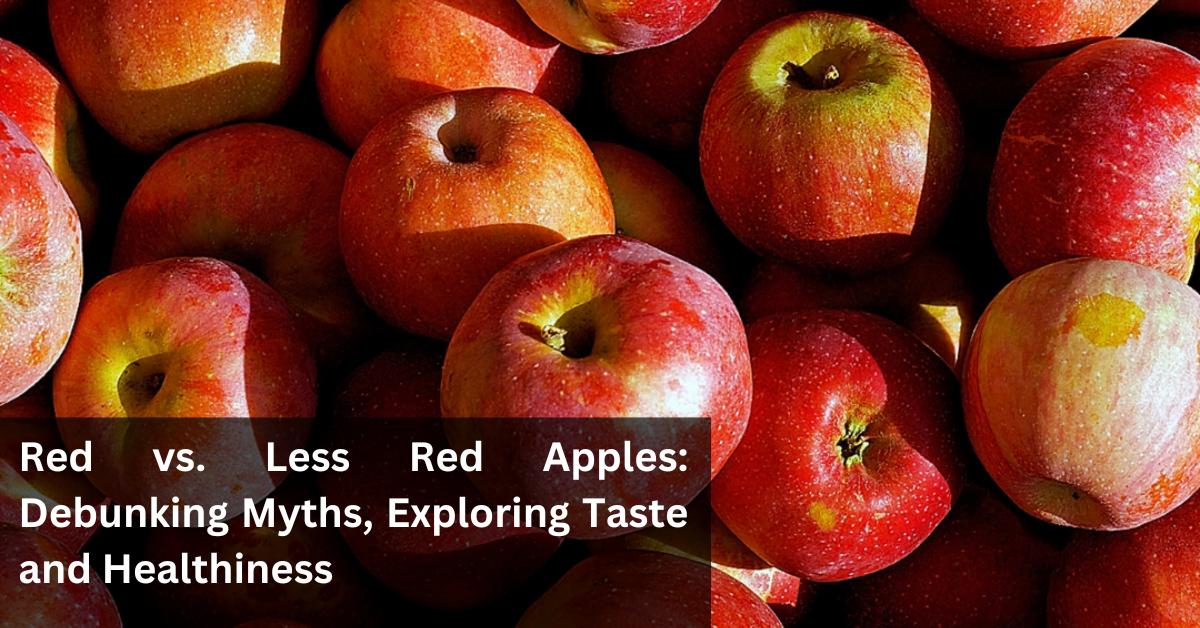Debunking Apple color myths
Have you ever wondered if red apples truly reign supreme in taste and healthiness? Let’s debunk this common myth and explore the rich flavors and health benefits of both red and less red apple varieties.
The Common Belief
Red apples often steal the spotlight as the epitome of sweetness and flavor. However, let’s not overlook the less red varieties just because they don’t sport the same vibrant hue. Did you know that apples from the same tree can vary in color, with some being more red and others less red? This variation is a natural occurrence and doesn’t affect the taste or quality of the fruit.
Introducing the Players
While red apples are known for their juicy sweetness, less red apples offer a unique flavor profile that’s equally delightful. These apples may not have the same intense red color, but they make up for it with their crisp texture and subtle sweetness. The reason for their less red appearance lies in their growth process – when apples don’t receive proper sunlight from all angles on the tree, they may remain less red. However, rest assured, their color doesn’t impact their taste or quality.
Apples are a beloved fruit enjoyed by people worldwide, but there’s often a misconception that the reddest apples are the sweetest and healthiest.
In this article, we’ll debunk this myth and explore the true taste and health benefits of both red and less red apples.
1. Myth Debunked: Color Doesn’t Equal Sweetness
Contrary to popular belief, the color of an apple doesn’t necessarily indicate its sweetness. While red apples are often associated with sweetness, less red varieties can be equally sweet or even sweeter. Factors such as the apple variety, ripeness, and growing conditions play a more significant role in determining sweetness than the apple’s color. The reason for their less red appearance lies in their growth process – when apples don’t receive proper sunlight from all angles on the tree, they may remain less red. However, rest assured, their color doesn’t impact their taste or quality.
2. Natural Variation: Same Variety, Different Colors
It’s essential to understand that even apples from the same tree of the same variety can vary in color due to environmental factors such as sunlight exposure during growth. This natural variation in color does not affect the quality, nutrition, or taste of the apples. Both apples maintain the same level of freshness, nutritional content, and flavor profile, regardless of their color.
3. Nutritional Benefits: Healthiness of Red and Less Red Apples
When it comes to nutrition, both red and less red apples offer a wide range of health benefits. They are rich in essential vitamins, minerals, and dietary fiber, supporting digestive health, heart health, and overall well-being. The nutritional content of an apple remains consistent regardless of its color, making both red and less red varieties nutritious choices.
4. Supporting Local Farms: Embracing Apple Diversity
By embracing the diversity of apple varieties, including both red and less red options, consumers can support local farms and promote agricultural biodiversity. Choosing locally grown apples ensures freshness and quality while contributing to the sustainability of small-scale farming communities.
In conclusion, the idea that red apples are inherently sweeter and healthier than less red varieties is a myth that needs debunking. Both types of apples offer a delicious taste and valuable nutritional benefits, regardless of their color. By exploring the diverse flavors of red delicious and less red apples, consumers can make informed choices that align with their preferences and support local agriculture.




